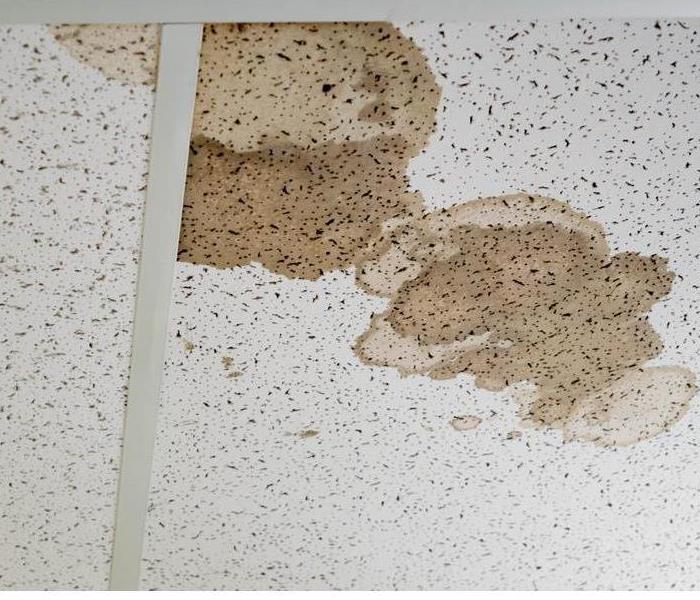Water Damage on Ceiling and Walls - Is it Old or New?
10/28/2019 (Permalink)
Have you found a water spot on your wall or ceiling? Water spots on ceilings and walls are usually caused by a leaky pipe or condensation. They can also be caused by a leaky roof or leaks around a window or door. If you find a water spot on your ceiling or wall, there is a good chance that the water damage has been occurring for some time as it takes time for the water to permeate through the drywall of the ceiling or wall. But how bad is the water damage and how long has it been happening? In this blog, we will go over how to evaluate a water spot and determine how old it is and how much water damage may have happened already.
How Old Is the House?
A water spot on the ceiling or wall may be an old water spot that hasn’t seen any recent water damage in a while. This can be the result of an old roof being repaired many years ago or a bathroom renovation where an old leak was repaired. Even if the water spot is old, there can still be water damage that you will want to have checked out by a professional. Behind that old water spot could be damage to the structure or mold growth.
Touch the Water Spot
One easy way to determine if a water spot is new or old is to touch it. If the water spot is wet and the drywall is still solid, then the water spot is most likely new. If the water spot is wet and the drywall is soggy, then the water damage has been most likely occurring for some time. If the water spot is dry and the drywall is soft and crumbly, then the water damage is probably no longer occurring but the damage could still be quite extensive. If the water spot is dry and the drywall is still solid, then the water damage is probably no longer occurring and the damage may not be so extensive. Of course, there really is no telling how much water damage has occurred until you remove the water damaged drywall and examine the structure and insulation behind it.
Examine the Color of the Water Spot
A new water spot will be a solid color. The color can be light or dark, as long as it is one solid color. An older water spot will have rings of different colors around the water spot. It is kind of like a tree trunk - the more rings, the older the tree or water spot. The rings happen as a result of the water spot getting wet, drying out, getting wet again, drying out again, and repeating these steps over and over.
Examine the Building Materials
Even a small water spot can be hiding extensive water damage due to the ceiling’s materials and paint. Thick paint can hide or prevent water from seeping through and causing a water spot. Also, ceiling tiles can keep the water from seeping through the ceiling. Sometimes in these cases, the water can seep to other areas like ceiling joists, corners of ceilings, and/or walls. If the area above the water spot has insulation, the water could have been absorbed by the insulation. Depending on the materials, the water damage could have been occurring for a long time and is just becoming visible due to materials holding the water back.
Check for Mold
Check the water spot and the surrounding area for any signs of mold. It only takes a couple of days for mold spores to take hold and grow in a moist area. If there is mold growth around the water spot, then there is a chance that the mold growth is also happening behind the water spot. Unlike water damage which can take time to cause extensive damage, mold growth can quickly spread and cause extensive damage to a home in no time. Mold can spread quickly from the drywall to the insulation to the structure. If you spot mold, you will definitely want to act fast and have a professional mold remediation company analyze the damage and start the remediation process before it spreads further.
How Bad is the Water Damage from the Water Spot? Call SERVPRO of Indianapolis West to Find Out!
If you find a water spot on your ceiling or wall, it’s important to have a water damage professional examine it and determine if there is more damage behind the water spot. Even if the water spot is old, it’s still important to remove the damage and examine the area behind it as there could be structural damage or mold growth. Call the water damage and mold remediation pros of SERVPRO of Indianapolis West to examine and restore any water damage or mold growth that may have occurred. They have the knowledge, expertise, tools, and equipment to handle all types and sizes of damage. They’re available 24/7, so don’t hesitate to call them the next time disaster strikes your home or business.





 24/7 Emergency Service
24/7 Emergency Service
